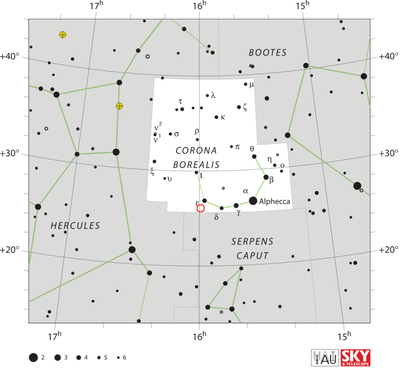Spokane’s summer star forecast: Backyard astronomers can keep eyes open for rare nova outburst, Leo’s mane, Big Dipper and more

One of the first steps to becoming a backyard astronomer is learning how to read the night sky. It doesn’t require a lot of money or technology – just some knowledge on how to get started.
Even from your own backyard, it’s best to start by simply observing the brightest parts of the sky. Of course, the farther you can get from city lights the better, but don’t let that dissuade you from looking up from wherever you are. Turn off what you can such as porch lights and interior lights, and let your eyes adapt to the darkness.
Mobile astronomy apps allow you to use your phone and point toward the brightest objects in the sky. This can give you a leg up for identifying what they are without much precursory knowledge. There’s a ton out there, but Stellarium and SkySafari are two popular apps.
The only problem is that your eyes can’t adjust to the dark if you keep shining a bright phone screen in your face. Solve that by creating a shortcut to turn your screen red. On an iPhone, go to your settings, select “accessibility,” and scroll down to “general.” Click “accessibility shortcut” and then click on “color filters.” This will allow you to triple click the side button and turn the color filter on.
Next, set up the color filter. Go to your settings and click “accessibility.” Then click “display and text size.” Click “color filters” then select “color tint,” and choose red as the color. Now you can triple-click to turn your display red and avoid disrupting your night vision.
This is a great first step for all ages to get excited about finding objects in the sky. To take it a step further, you can start looking at star charts. There are tons of different star charts, but they all in some way show the arrangement of stars and offer a convenient visual snapshot of the night sky. You can also use a star-finder wheel, which is a two-layer device that allows you to adjust the visible sky on your chart according to the date and time.
It only takes a few steps to orient yourself. Stand holding the chart in front of you. Point yourself and the chart toward the southern horizon. The sky above you is a dome, and you can visualize this on the chart by curving the paper upwards. This helps you see that if you follow that curve up and above your head, that the northern horizon is behind you. So if you were to hold the chart up in the sky, the top of the chart should point North. Use a red flashlight to look at your chart in the dark.
The Royal Astronomical Society of Canada has a free printable download of a two-piece star finder at rasc.ca/star-finder/print. The International Astronomical Union (IAU) also has free downloads of individual constellation charts at iau.org/public/themes/constellations.
Constellations can be large and somewhat complex figures at times, so another beginner tip is to learn a few asterisms. You know this one already – the Big Dipper. It is a simple shape found within the constellation Ursa Major. Orion’s Belt is also an asterism within the constellation Orion. Some asterisms, like the Summer Triangle, are a simple, observable shape that groups stars from different constellations.
The Big Dipper will be an easy asterism to find this summer.
“Look for the Big Dipper high in the northern sky as soon as it gets dark. Follow the curve of the handle to the star Arcturus, which is the brightest star visible in the current night sky,” said SFCC astronomy instructor John Whitmer.
A great beginner constellation to look for this summer is Leo. When the sky is dark, look low in the west.
“Leo is best identified by his mane, which looks like a backwards question mark with the bright star Regulus forming the point of the question mark. Leo is probably the easiest constellation of the zodiac to identify,” Whitmer said.
There is one star in particular to look out for in the next few months – T Corona Borealis. Once about every 80 years, it erupts with a nova outburst, and this might just be the lucky year.
“This rare type of star is called a recurrent nova, and is actually a binary system in which a white dwarf star is stealing matter from its nearby companion,” Whitmer said. “As hydrogen gas builds up on the white dwarf, eventually the temperature gets high enough to trigger hydrogen fusion, which blows off the outer layer of the star. This does not destroy the white dwarf, but it does cause the system to brighten tremendously.”
The increase in brightness fades in a few days, so it’s a great object to keep an eye on all summer long. Visit go.nasa.gov/3yL9Ek4 for an in-depth guide on how to find this star in the night sky.
Stargazers can also look forward to the annual summer treat of great views of our own Milky Way galaxy. A good view will require that you go away from city lights and are able to see a good portion of the southern horizon. You’ll have to stay up late for the best views between midnight and 3 a.m.
“If the sky is very dark and there is no moon, you should be able to see the bright central bulge of the Milky Way just above the southern horizon in the direction of the constellation Sagittarius,” Whitmer said.
There’s no reason to be intimidated by starting to read the night sky. Learn small pieces at a time, and soon you’ll be able to know your way around. And you don’t have to go it alone. Visit spokaneastronomical.org to find information on upcoming meetings and Star Parties to learn from local astronomers.